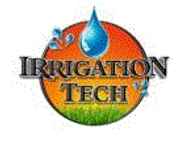How to Get Your Lawn Sprinkler System Spring-Ready

When it’s time to revitalize your landscape for the spring season, you’ll need to wake up your lawn sprinkler system from its winterized state. While the process is fairly simple, it’s important to follow steps correctly to avoid causing damage to the irrigation system. To help you power up your sprinklers for spring, here are the main steps you should follow, while also making sure to comply with any specific manufacturer recommendations.
6 Steps to Take When Prepping Your Sprinkler System for Spring
1. Make Sure Soil Has Thawed
While you may be eager to get to landscaping, it’s important not to rush the de-winterization process. Despite warmer temperatures, it’s possible for the soil to remain frozen at the beginning of spring—especially in the Northeast. These cooler temperatures may cause irrigation lines to freeze and burst. To check, simply dig a small patch in your yard to the depth of the irrigation system. If the soil appears frozen, wait a week and check again.
2. Power Up Control Panel
To get water flowing, you’ll need to access your irrigation control panel and turn it back on. Although this process usually involves a simple flick of a switch, you should take time to inspect various aspects of the panel. For example, you’ll want to make sure that it is equipped with fully-charged batteries and that all the timing settings are aligned with your preferences. Also, double check that your rain sensor and/or soil moisture sensor are registering with the controller.
3. Pressurize Mainline Slowly
Opening sprinkler valves too quickly may cause water to come out with too much pressure & volume, creating what’s known as a “water hammer.” To avoid damaging your lawn sprinkler system, locate the main valve and open only slightly so you hear just a little bit of water entering the pipe. At this point, do nothing except listen until there is no more flow. Now open the valve all the way. Slowly, open it so that water doesn’t rush in. If you have them, also open up the vacuum breakers.
4. Check Electric Control Valve Activation
If you have different sprinkler zones, open up each line individually from the controller allowing water to flow into the zone piping. Once you are sure that each zone turns on and off again, you can proceed to the next step.
5. Check that all Sprinkler Heads are Popping up
One zone at a time, check that all sprinkler heads are coming up. This is usually the time when you will discover some heads are not popping up because the lawn has grown over and is holding the heads down. Cut the grass back around the head with a sharp knife you don’t mind putting in the soil and observe whether the head has full flow. Once all of your heads are coming all the way up, move to final step.
6. Check for Performance Problems
Once the system is up and running, look at how each outlet is performing. If you notice any blockages, leaks, or abnormal spray patterns, call an irrigation contractor to inspect and repair the issue.
When you have Irrigation Tech by your side, getting your lawn sprinkler system ready for spring is a stress-free experience. Based in Rochester, NY, this top-rated contractor offers comprehensive irrigation repairs to ensure your sprinklers are functioning effectively and efficiently. Using the best industry resources, this team can also help install new lawn irrigation systems—including drip irrigation systems. For more information on their spring startup services, visit this specialist online. To request service, call a friendly associate at (585) 225-0380.
About the Business
Have a question? Ask the experts!
Send your question

